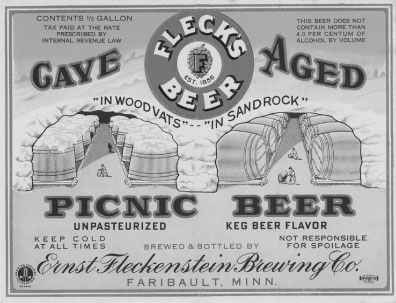Refrigeration is the method of cooling something to a temperature lower than that of thesurrounding environment or, more accurately, the transfer of heat away from one mass and into another. Historically, palatable beer could only be brewed in climates and seasons that allowed sufficient natural cooling of the fermenting beer. Fermentation is an exothermic process—it generates heat. Uncontrolled, fermentation temperatures can quickly rise high enough to cause off-flavors or even kill the yeast itself. Each yeast strain has its unique temperatures it tolerates and a narrower range for the beer it produces to taste ideal. In northern latitudes, this once generally limited brewing to the months of October through April; the brewing season was somewhat longer in steadily cool parts of northern Europe and Britain. Most beer was consumed shortly after fermentation because bacterial spoilage usually set in within weeks. For centuries, ice was harvested in large blocks in winter and stored with the beer in deep underground cellars. This could keep the beer cool for months. Later, cool water was run through piping submerged in the fermenters, but this method was dependent on ambient water temperatures that often fluctuated seasonally.

Beer label, c. 1933, advertising a traditional cave lagering. Before the advent of refrigeration in the late 19th century, caves were ready-made cellars, as they were cool enough to store lagers for aging. pike microbrewery museum, seattle, wa
The genuine breakthrough was “artificial” or mechanical refrigeration, which was invented specifically for brewing. In 1873 Carl von Linde, working for the Spaten Brewery in Munich, invented mechanical refrigeration.
In most modern breweries, fermentation vessels are fitted with hollow jackets that chill parts of the interior surface of the vessel on demand. This allows brewers to set a maximum temperature during active fermentation and then easily chill the beer for further processing. Refrigeration is also widely applied to heat exchangers, where the bulk of the cooling may be achieved with ambient-temperature water but supplemented by a further refrigerated cooling stage. This allows wort and beer to be quickly chilled to cold temperatures during periods when the ambient water temperature is relatively warm.
